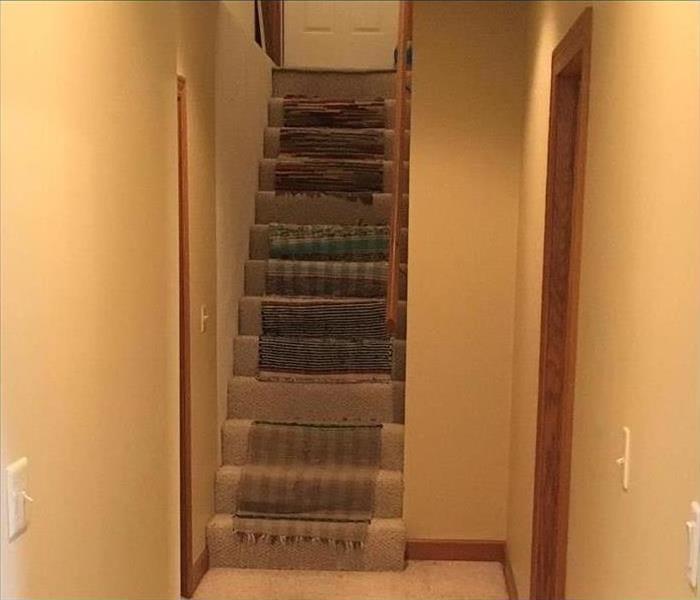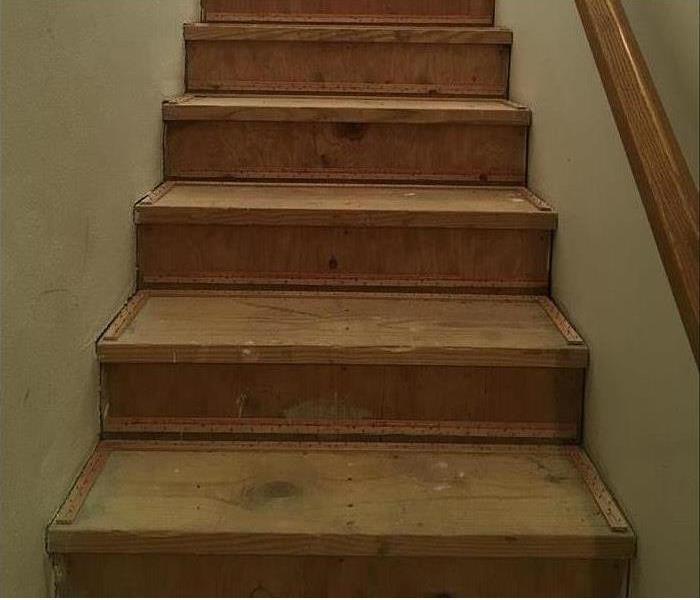
Step 4: Drying and Dehumidification
Our Water Damage Restoration Process
How We Dry and Dehumidify Your Shreveport Abode
Now that our SERVPRO crew has vacated the standing water from your living room and dining area, what next? We understand that the time of the year in Shreveport must be reckoned into how we achieve our drying goals. Why? External temperature can dictate if we need an open or closed system for removing excess humidity from the interior. Not just the water vapor, but also the moisture that has been absorbed into the porous materials. Some examples of items that readily wick water:
• Drywall, not the gypsum but the cardboard sandwich
• Carpets and Pads
• Wood trim and baseboards
• Acoustical ceiling tiles
Building Structure Matters When It Comes to Drying
Shreveport area homes often have crawlspace foundations that can retain high levels of water or moisture. Frequently, our ASD applied structural drying technicians can arrange dehumidifiers working with directed-flow air movers to hasten the evaporation rate of these confined spaces.
To minimize the degradation of building materials, fixtures, and possessions, technicians quickly work to restore a normal RH relative humidity range to the interior of the structure. No guess is needed! We can monitor the drying process using moisture sensors until we achieve the drying goals set forth from our baseline measurements take of unaffected areas of the house.
Some Equipment for Final Drying
• Axial fans--high volume air circulation
• Centrifugal air movers for concentrated directed airflow
• LGR low grain refrigerant dehumidifiers
• Desiccant dehumidifiers
Drying / Dehumidification
Our Professionals will use room measurements, temperature, and relative humidity to determine the optimal number of air movers and dehumidifiers to dry your home or business. We’ll carefully monitor the progress using moisture meters until the materials return to acceptable drying goals.
- Use Dehumidification Equipment
- Use Monitoring Equipment to Track Progress
Monitor Floor and Walls
We check the moisture levels to monitor the drying process.
- Monitor Floors
- Monitor Walls
Drying Equipment
- Industrial-grade dehumidifiers help prevent secondary water damage like swelling and warping of floors, walls, and furniture.
- High-speed air movers create airflow across walls, carpets, pads, and furniture, which accelerates the evaporation of moisture.






 24/7 Emergency Service
24/7 Emergency Service




